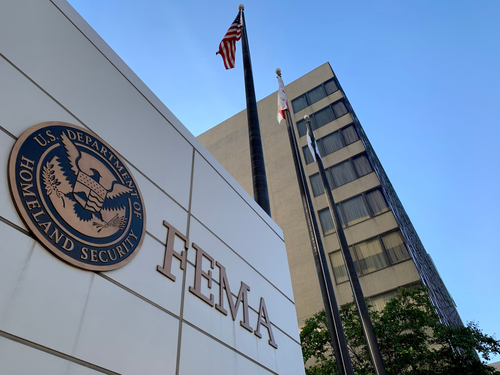
Bipartisan legislation soon to be introduced in the U.S. House of Representatives would reform the Federal Emergency Management Agency (FEMA) and federal disaster assistance programs.
U.S. Reps. Sam Graves (R-MO), Transportation and Infrastructure Committee chairman, and Rick Larsen (D-WA) Transportation and Infrastructure Committee ranking member, released a draft the Fixing Emergency Management for Americans Act of 2025 on May 8 to solicit feedback from colleagues, emergency management stakeholders, and others.
“We have clearly seen that FEMA is not working as it should for Americans who’ve been impacted by disasters. Congress has passed FEMA reforms over the years, but it simply hasn’t been enough,” Graves said. “By releasing this discussion draft legislation, we hope to engage our colleagues and stakeholders on comprehensive FEMA reform. This draft bill includes substantive changes that will transform FEMA and our emergency programs to be much more state and locally driven – not micro-managed into ineffectiveness by the federal government. It makes commonsense reforms to help victims and communities recover faster and to ensure better coordination among agencies involved in emergency preparedness, response, and recovery. The bill also strips out the red tape that slows down recoveries, it makes disaster programs more accountable to the taxpayer, and it ensures that FEMA treats all victims fairly.”
The legislation would do five things:
FEMA would be restored as an independent agency reporting directly to the president and overseen by its own inspector general. By returning to a cabinet-level agency, the FEMA administrator will be better able to lead a coordinated, government-wide response to disasters. The structure mirrors the Stafford Act, authorizing the president to direct federal disaster response efforts through the Disaster Relief Fund.
A newly created Recovery Task Force would be tasked with closing out more than 1,000 lingering disaster declarations dating back to Hurricane Katrina. It also would directs FEMA to improve coordination with all federal agencies involved in disaster recovery.
The FEMA administrator would be directed to apply practical, survivor-focused solutions that both speed assistance and reduce overall costs to taxpayers; provide clear, understandable notices to disaster survivors; and remove disincentives that have discouraged donations from charities, religious organizations, and the public. Disaster survivors would complete one streamlined application when applying for assistance, and states would be given more flexibility to determine the best emergency housing solution for a particular disaster.
Building code requirements would be clarified to ensure states retain the flexibility to tailor standards to the hazards they face, and states would receive preapproval for mitigation projects through a peer-review process.
The Office of Management and Budget would be directed to establish a centralized public website that tracks disaster assistance funding across the federal government, and the Government Accountability Office would be required to review all FEMA regulations and policies to eliminate outdated, conflicting, and unnecessary rules. The review would involve the effectiveness of public alerting systems, insurance coverage, assessment of identity theft and disaster fraud risks, and cost savings associated with the reforms. Political discrimination would be prohibited while providing disaster recovery assistance.




